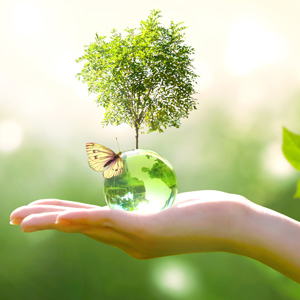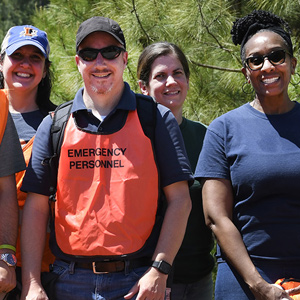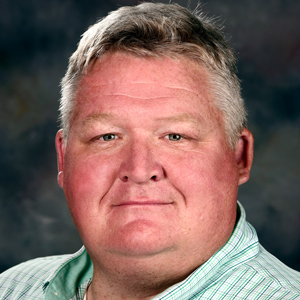Earth Day, celebrated April 22, saw NIEHS researchers and facilities managers take home a slew of honors from the U.S. Department of Health and Human Service (HHS), the National Institutes of Health (NIH), and NIEHS’s own program, the Green Researcher Awards.
NIEHS won seven of the 40 total HHS 2020 Green Champion Awards, which recognize individual federal employees, Native American tribal members, and others within HHS who integrate sustainability practices into their operations. HHS is the largest department of the federal government.
NIEHS Green Champions
Seven NIEHS winning projects from among the 12 HHS Green Champion award categories focused on sustainability, efficiency, and community well-being.
Sustainable Acquisitions — Paul Johnson, Brian Harris, Kerri Hartung, Rachel Faison, Michael Spencer, Chris Long, Rachel Scroggins, Tom Sliwa, Kim Jones, Steven Smith.
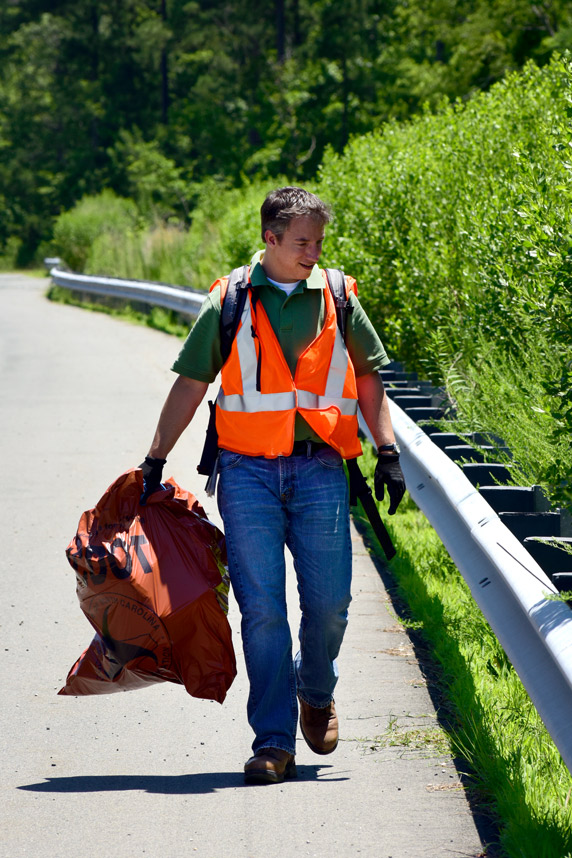 Paul Johnson, who manages environmental protection and stewardship programs at NIEHS, is shown here participating in a 2017 NIEHS Adopt-a-Highway outing. (Photo courtesy of Steve McCaw / NIEHS)
Paul Johnson, who manages environmental protection and stewardship programs at NIEHS, is shown here participating in a 2017 NIEHS Adopt-a-Highway outing. (Photo courtesy of Steve McCaw / NIEHS)NIEHS replaced 35 aging ultralow temperature freezers with new ENERGY STAR-certified ULT freezers, resulting in an annual reduction in electricity usage of 232,896 kilowatt-hours (kWh). That is a 64% annual reduction in greenhouse gas emissions, or the equivalent of 150 metric tons of carbon dioxide.
Electronic Stewardship — Kimberly Jones, Richard Weaver, April Byrd, Kelly Powell.
Each year, NIEHS generates more than 2,000 surplus items, including electronics, office furniture, and scientific equipment. The NIEHS Direct Donation Program donates many of these to educational institutions and nonprofits. In its first year, program donations valued at more than $250,000 were diverted from landfills and directed to local universities and high schools.
Energy and Fleet Management — Bill Blair, Benjamin Hocutt, Lee Howell, Marcos Flores.
Replacement of the underground high temperature hot water piping insulation resulted in a 50% reduction in thermal loss by the Central Utility Plant, reducing annual natural gas usage by 300,000 therms and decreasing CO2 emissions by 1,587 metric tons.
Good Neighbor — Paul Johnson, Timothy Adkins, Craig Upson, David Mohammadi, Roger Weidner, Thomas Carol, Crispin Hernandez, Bill Steinmetz, Carranza Smith, Antares Nicklow.
A new Drain Disposal Guide spells out policies for more than 275 chemicals approved for drain disposal, along with an eight-step safety protocol. It also addresses liquid biohazardous waste, pharmaceutical waste, and waste containing nanomaterials.
 NIEHS staff were recognized for their leadership in enhancing environmental stewardship and sustainability efforts. (Photo courtesy of Kowit Lanchu / Shutterstock.com)
NIEHS staff were recognized for their leadership in enhancing environmental stewardship and sustainability efforts. (Photo courtesy of Kowit Lanchu / Shutterstock.com)Green Labs — NIEHS recognized.
Fifteen environmentally controlled lab rooms were replaced with 2,100 square feet of more energy efficient space. The new rooms are projected to save 520,000 kWh per year of electricity, the equivalent of 368 metric tons of greenhouse gases.
Water Use Efficiency and Management — Kyle Askins, James Victor Stancil III, Bill Blair, Terry Wells, Daniel Burk, Heather Davis, Joseph Shealey.
A new variable-volume pumping system, along with new valves, pumps, motors, and other design changes, will increase energy efficiency in the preheat and reheat hot water system of Modules A-E in Building 101. The annual estimated energy savings is 540,000 kWh per year.
Wellness — NIEHS recognized.
The institute’s COVID-19 Testing Operations Project gave employees confidence in their safety and well-being on-campus during the pandemic and was critical to planning for a return of the full workforce. NIEHS experienced a very low rate of known cases among its employees and no known on-campus transmissions.
“This year, NIEHS staff received an incredible number of Green Champion Awards,” said NIEHS Director Rick Woychik, Ph.D. “I am honored to work with individuals who are so deeply committed to making our institute a leader in sustainability efforts.”
NIH Green Labs Program
The NIH Green Labs Program, now in its third year, grants sustainability certifications to NIH laboratories based on a self-assessment survey. Despite the pandemic, NIH in 2020 received 52 applications, the highest number of applications yet. Six received gold certification, 33 silver, nine bronze, and 4 labs did not meet the criteria for certification.
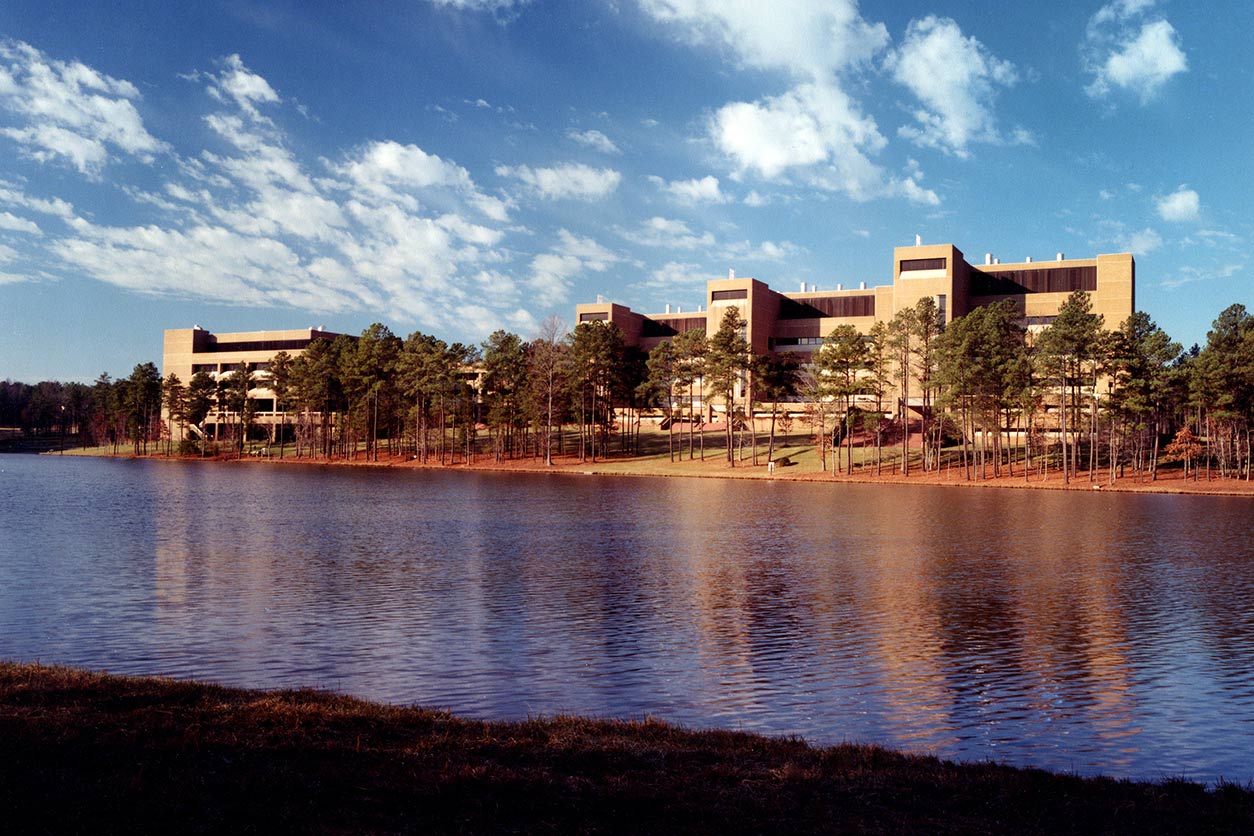 NIEHS, located in Research Triangle Park, North Carolina, participates in the state’s Environmental Stewardship Initiative. (Photo courtesy of Steve McCaw / NIEHS)
NIEHS, located in Research Triangle Park, North Carolina, participates in the state’s Environmental Stewardship Initiative. (Photo courtesy of Steve McCaw / NIEHS)NIEHS had two successful applicants: Terry Blankenship-Paris, D.V.M., head of the Veterinary Medicine Group in the Comparative Medicine Branch; and Susan Elmore, D.V.M., Mouse Embryo Phenotyping Group.
“Special kudos to Blankenship-Paris and Elmore, who are both bronze-level NIEHS Green Researchers and silver award winners from the 2020 NIH Green Labs Program,” noted NIEHS Scientific Director Darryl Zeldin, M.D.
(John Yewell is a contract writer for the NIEHS Office of Communications and Public Liaison.)






